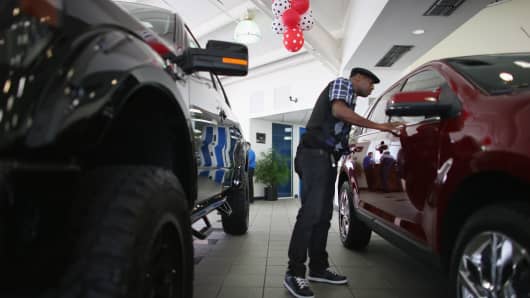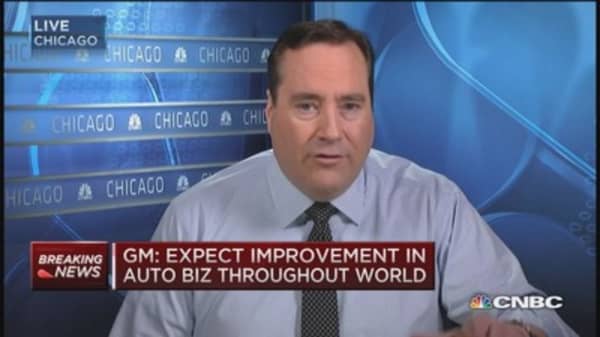Add the auto industry to the list of beneficiaries from lower gasoline prices.
Car sales were on a roll well before oil prices began crashing this summer, bringing gasoline prices with them—albeit with something of a lag. Since July, the average price of a gallon of regular has fallen by more than 40 percent—with no floor in sight.
Meanwhile car sales have zoomed back from the steep slowdown brought on by the Great Recession. After hitting a low point in July 2009, the pace of monthly sales has more than doubled to levels not seen since before the recession hit in 2007.
Early in the recovery, those gains were driven by pent-up demand, as an aging fleet of cars and trucks forced drivers to replace worn-out vehicles. A government-sponsored "cash for clunkers" program helped spur some of those trade-ins.





